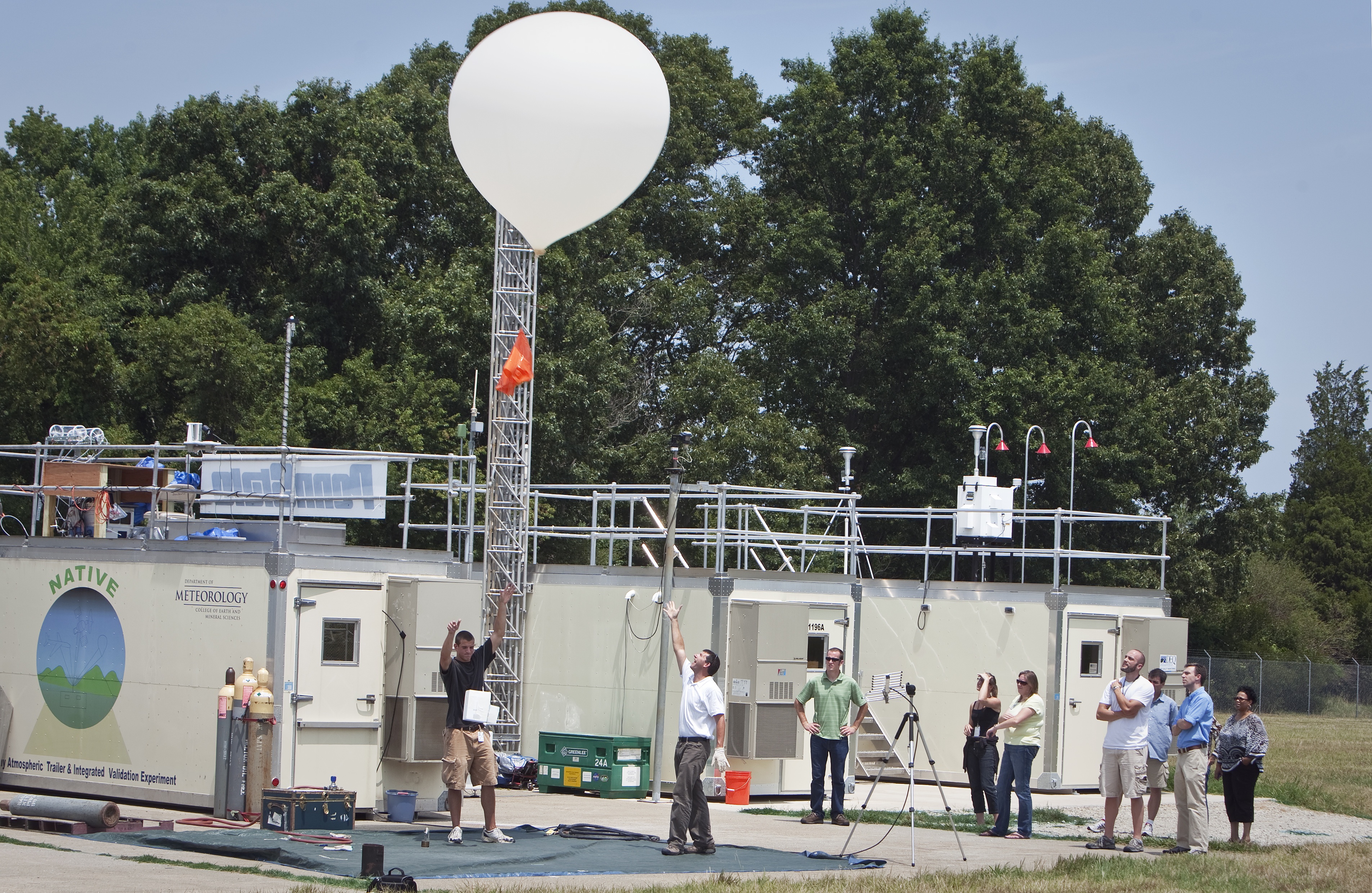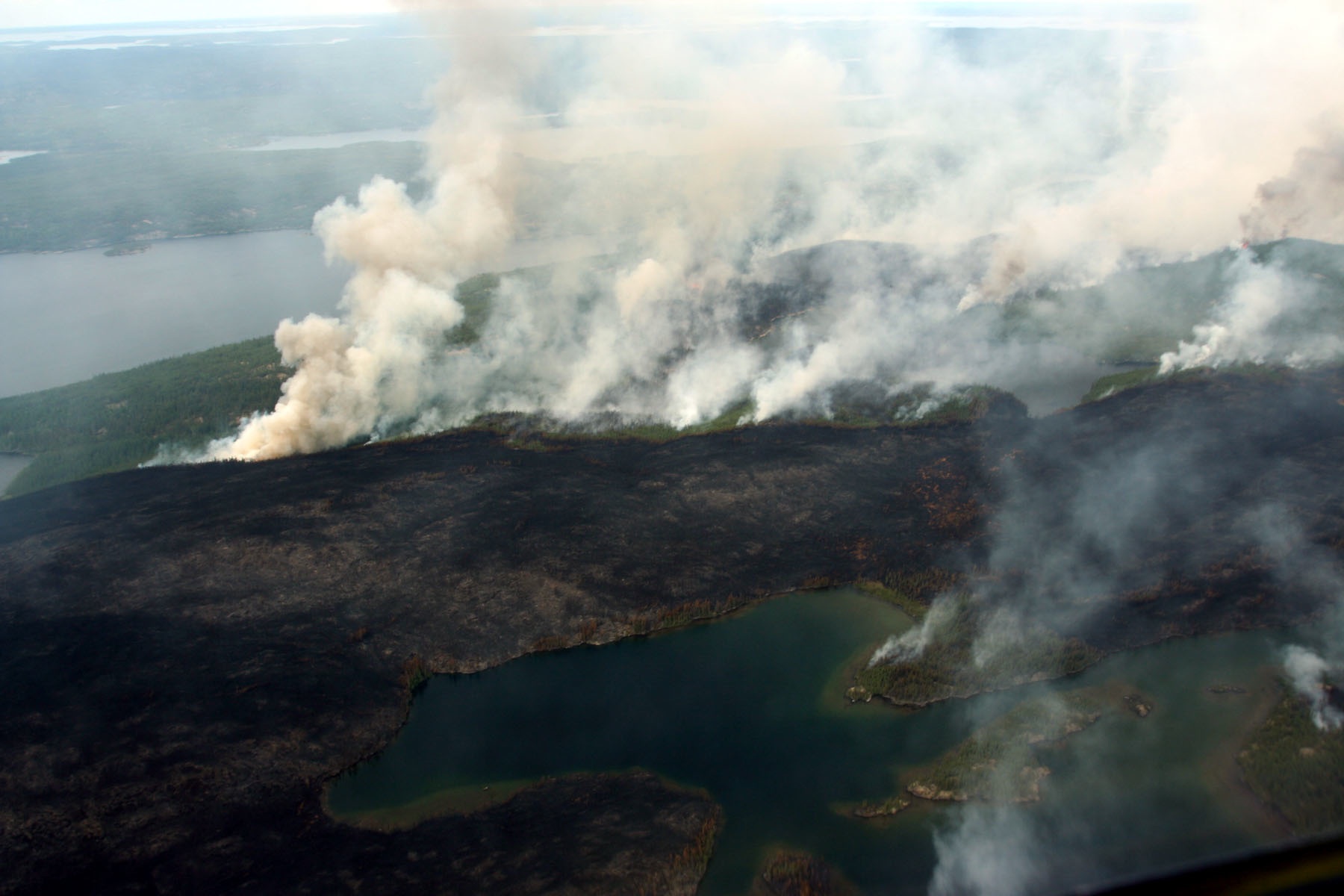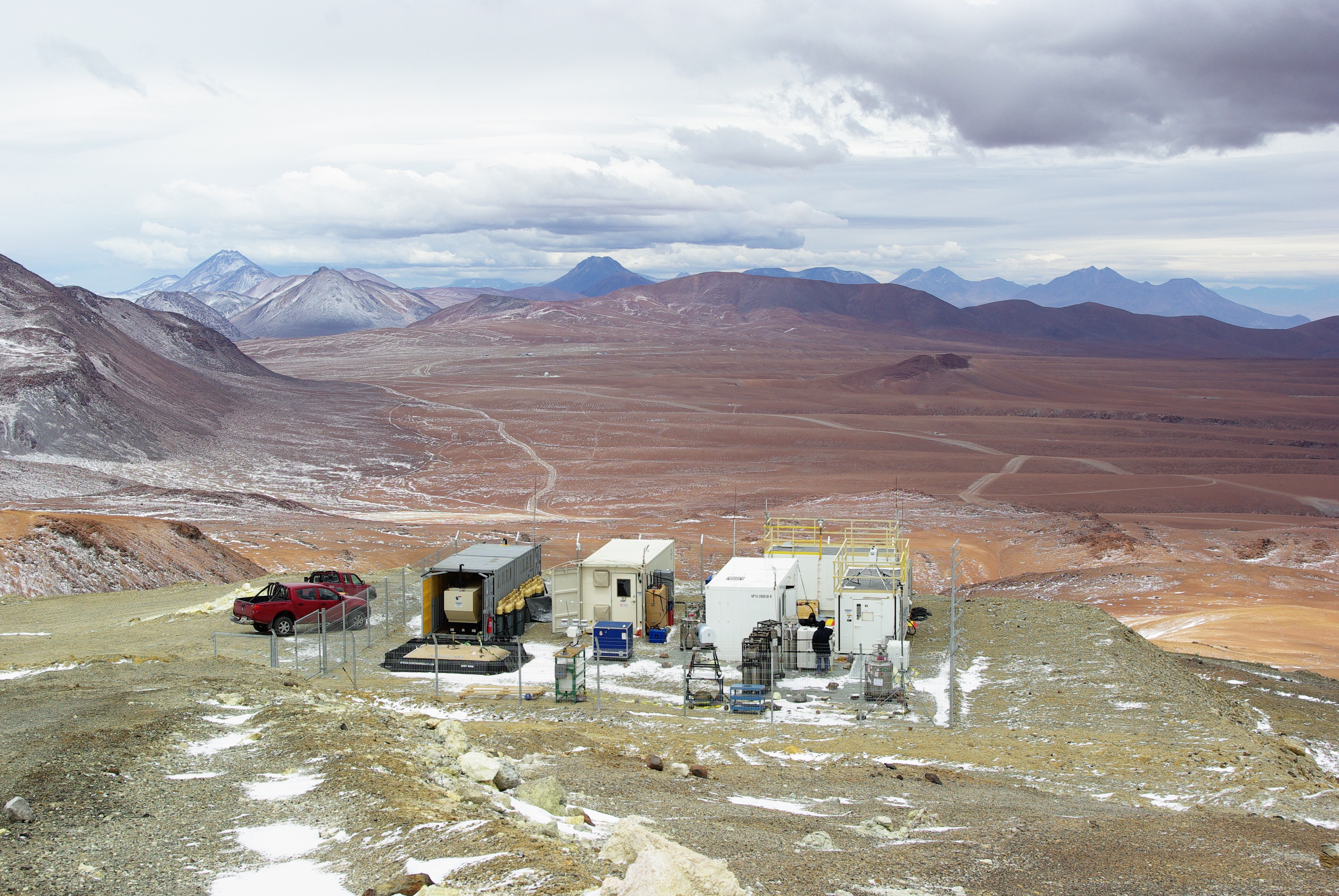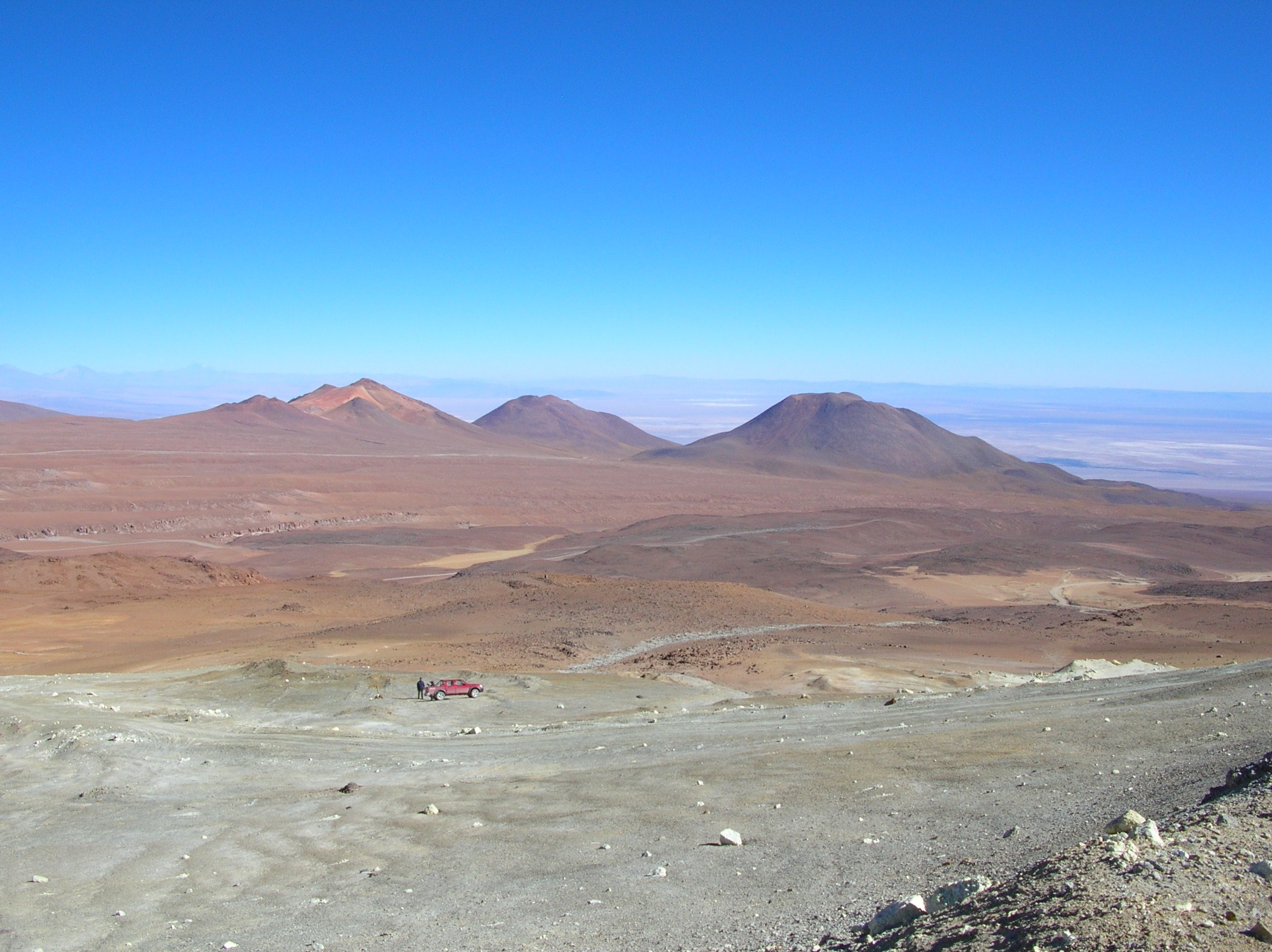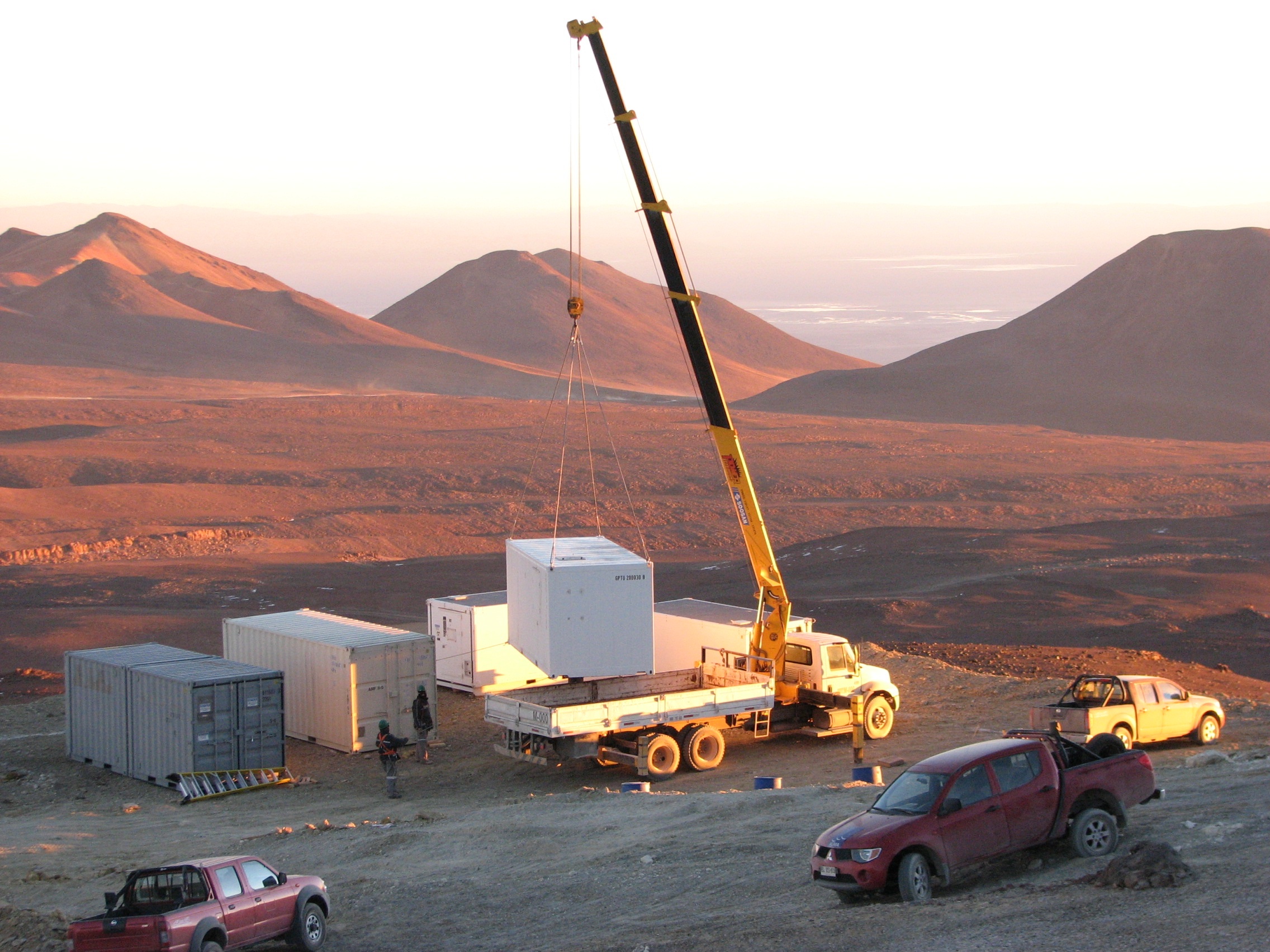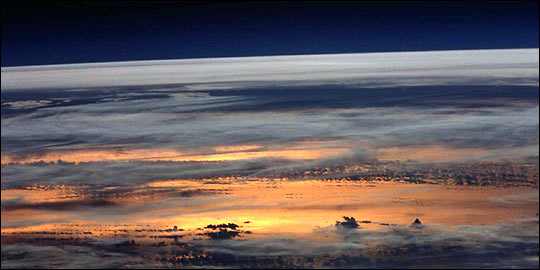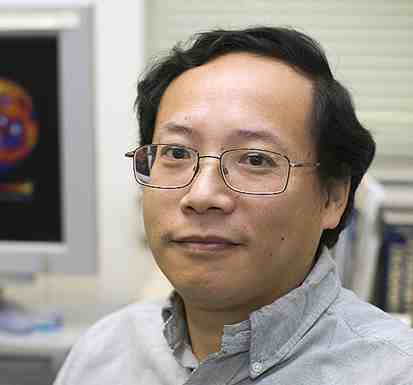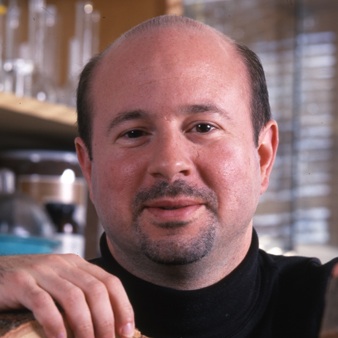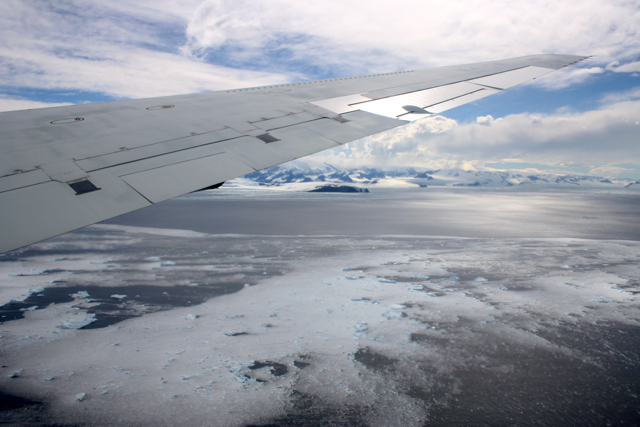
Fly over the South Pole at lunch, back to the tip of Patagonia by supper — just another day of drudgery collecting scientific data.
The second year of NASA’s Operation IceBridge is heading into its final week of research flights, which the team of scientists, pilots and flight crew began from their home base of Punta Arenas, Chile on Oct. 26. The multi-year campaign employs NASA’s DC-8 to fly multiple trips over Antarctica and its surrounding sea ice to measure the incremental changes that will help scientists make better judgments about sea level rise and the impact a warming climate is having on the mountainous, ice-bound continent. IceBridge crews have encountered rough weather and made long flights over magnificent, desolate landscapes, measuring ice sheet thickness, sea ice composition, snow cover and even the bedrock far underneath the icy cover. With these multiple flights and with multiple instruments on the plane, the mission is partly designed to do the work of a satellite.
The past few decades in Earth science are often referred to as the “satellite era.” Scientists’ ability to monitor so many aspects of the planet from constantly orbiting radars, spectrometers, radiometers, imagers and lidars revolutionized the way Earth’s systems could be observed. One of the most significant changes was that satellites offered consistent, global measurements over years and years — they provide continuity. NASA’s ICESat (Ice, Cloud, land and Elevation Satellite) mission was making important observations of the planet’s rapidly changing poles from 2003 until 2010, when the payload shut down. ICESat II isn’t set to launch until 2015, creating a potentially significant five-year gap in measurements. At a time when scientists pursue every change in glaciers and ice sheets with necessary urgency, that was unacceptable, and where IceBridge came in.
“We wanted to avoid an ‘oh my god’ moment when we came back in 2015 with IceSAT II,” said IceBridge scientist Seelye Martin, while talking to reporters on a media teleconference on Monday afternoon. Martin said the prospect of turning on ICESat II’s laser altimeter and finding that enormous changed had occurred and had gone unobserved partly drove the Ice Bridge planning. “We wanted continuity in the polar region. We didn’t want anysurprises.”
The timing of the IceBridge media day coincided with a big piece in the New York Times looking at not only what’s happening at the poles and with sea level rise, but what is happening with the scientific effort within NASA and beyond to study the poles. The satellite “gap” plays a role in that story, too:
The satellite difficulties are onesymptom of a broader problem: because no scientifically advanced countryhas made a strategic priority of studying land ice, scientists lackelementary information that they need to make sense of what ishappening.
Theydo not know the lay of the land beneath most of the world’s glaciers,including many in Greenland, in sufficient detail to calculate how fastthe ice might retreat. They have only haphazard readings of the depthand temperature of the ocean near Greenland, needed to figure out why somuch warm water seems to be attacking the ice sheet.
Theinformation problems are even more severe in Antarctica. Much of thatcontinent is colder than Greenland, and its ice sheet is believed to bemore stable, over all. But in recent years, parts of the ice sheet havestarted to flow rapidly, raising the possibility that it willdestabilize in the same way that much of the world’s other ice has.
For more on-the-ground — or up-in-the-air — reporting from IceBridge, check out the mission twitter or blog. You can also chat with Ice Bridge scientists on Thursday, Nov. 18, at 1 p.m. EST. The page will be open for question submittals about a half-hour before the chat begins.
— By Patrick Lynch, NASA’s Earth Science News Team
— photo at top courtesy Kathryn Hansen, NASA’s Earth Science News Team


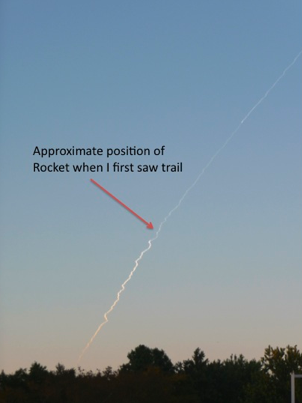 Recently, a colleague and I caught a glimpse of an odd-looking
Recently, a colleague and I caught a glimpse of an odd-looking 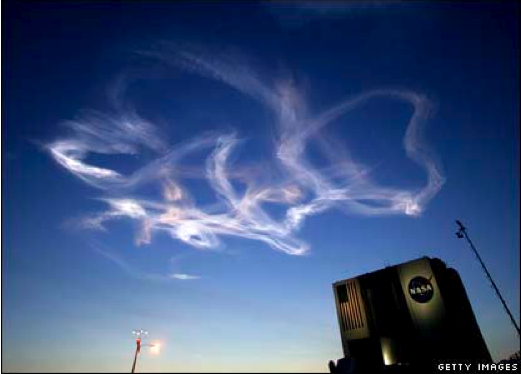 The winds were relatively light that evening, so about 45 minutes later the trail was still clearly visible overhead. However, there was just enough wind to twist the contrail into something that could have been left behind by a crazed aerobatic pilot.
The winds were relatively light that evening, so about 45 minutes later the trail was still clearly visible overhead. However, there was just enough wind to twist the contrail into something that could have been left behind by a crazed aerobatic pilot. 